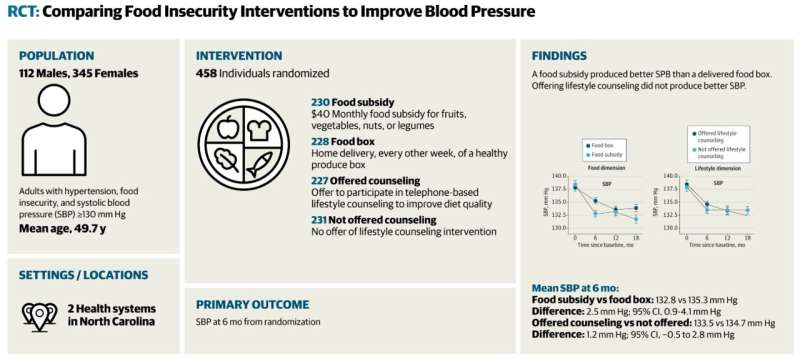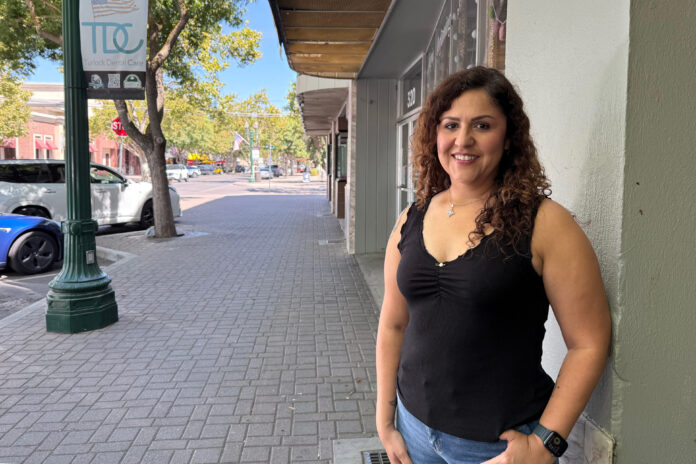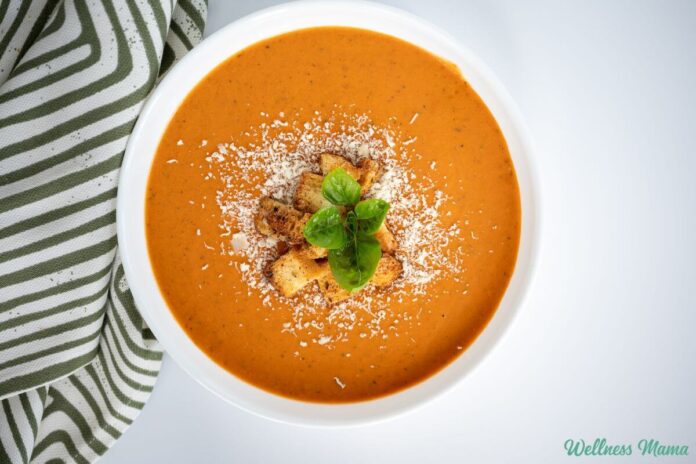A first-of-its-kind clinical study shows that offering modest monthly grocery cards for produce leads to improvements in blood pressure compared to distributing pre-selected boxes of healthy food.
While the link between nutrition and improved health outcomes is well established, there had previously been limited clinical evidence to guide how best to deliver healthy food to individuals facing food insecurity. Conducted by researchers at UNC Health and UNC Schools of Medicine and Public Health, the Healthy Food First trial offers compelling evidence that empowering people to choose the nutritious foods they want can drive meaningful improvements in health outcomes, helping more North Carolina families take steps toward healthier lifestyles.
High blood pressure affects about half of all adults and can lead to serious heart problems. Even though many people get treatment, UNC researchers say more than 75% of Americans with high blood pressure still have readings that are too high, and food insecurity can cause those numbers to go up.
“Our objective for the trial was to find an intervention that would improve blood pressure among participants who were experiencing food insecurity,” explains Seth A. Berkowitz, MD, MPH, study co-leader, associate professor in the UNC Department of Medicine, and a principal investigator at the Cecil G. Sheps Center for Health Services Research.
“Study participants could receive two options, either a $40 food subsidy or a box of pre-selected healthy food. We found that both groups saw a decrease in blood pressure, but the participants who received the food subsidy had even lower blood pressure than the participants who received the food box.”
The study is published in the journal JAMA Internal Medicine.
The need for research
Food insecurity is prevalent across North Carolina. It affects more than 1.5 million North Carolinians, including 1 in 5 children. These individuals struggle to find the means to put food on the table, limiting their access to an active, healthy lifestyle.
In 2021, Blue Cross NC data scientists and analysts joined forces with UNC Health Alliance, UNC Health’s statewide clinically integrated network and population health services organization, and a team of UNC researchers, to improve food security and diet-related chronic conditions. Blue Cross NC invested in the research to address food security among its at-risk members who also have hypertension.
Recently, Blue Cross NC launched Health Through Food, an innovative, multi-year, multi-pronged initiative designed to expand access to nutritious food, reduce chronic conditions, improve health outcomes and lower health care costs across North Carolina.
“This research offers powerful insights into how we can more effectively address diet-related chronic conditions to meet the needs of North Carolinians,” said Colleen Briggs, Vice President of Corporate Responsibility at Blue Cross NC. “As we deliver on our purpose to improve the health and well-being of our members and communities, we’re investing in food-based programs that advance better health outcomes and drive affordability through smarter, preventive care.”
How food insecurity affects blood pressure
- Nutrition—People experiencing food insecurity may eat cheaper, less healthy foods because that is all they can afford.
- Budget Management—People experiencing food insecurity might have to choose between buying food, medicine or paying monthly utility bills.
- Stress—Constant worry about having enough food can lead to anxiety and depression.
“While plenty of evidence exists about how food insecurity can affect someone’s blood pressure, this study is the first effort to look directly at how to intervene and limit this type of health risk,” said Alice Ammerman, DrPH, study co-leader, Mildred Kaufman Distinguished Professor of Nutrition at the UNC Gillings School of Global Health, and director of the UNC Center for Health Promotion and Disease Prevention.
Inside the clinical trial
Throughout the Healthy Food First clinical study, the research team assessed nearly 2,800 potential candidates, before randomly placing about 450 people into different groups that received either the food subsidy or the food box. Other variations within the trial included being invited, or not, to take advantage of telephone-based lifestyle counseling.

Community health workers offered advice to participants about how to improve the quality of their diet. The counseling focused on a heart-healthy Mediterranean diet program that included printed copies of recipes as well as links to meal preparation videos. Finally, participants could receive their assigned intervention for either six or 12 months.
Food subsidy group: Half of the participants received a $40 monthly food subsidy loaded onto an electronic card that could be used at a local supermarket to purchase fruits, vegetables, nuts or legumes with no added salt or fat.
Food box group: The other half of participants received home delivery of a box of pre-selected healthy foods every other week. The box contained locally sourced produce, and either a prepared meal or one dozen eggs. The food box value was $115 a month, including $15 for delivery. This group also received a ‘stock up box’ at the start of the study. It included no-salt seasonings and healthy fats like olive oil and nuts.
Breakdown of results
The results of the Healthy Food First study suggest providing a food subsidy, which can increase the power to choose what kind of healthy food to buy to eat, had greater impact than delivering a box of food to their doorstep.
“We heard from study participants that they often could not eat the way they thought they should for their health because healthy food is just too expensive,” said study co-leader Darren DeWalt, MD, MPH, a practicing primary care doctor with UNC Health and Chair of the Department of Medicine.
“The results of our research show that the food subsidy made a big difference. That extra flexibility allowed them to eat the kind of healthy food they enjoy, and their blood pressure numbers went down.”
Food subsidy average blood pressure reading
- Baseline—138.42/84.87
- End of six months—132.8/80.5
Food box average blood pressure reading
- Baseline—137.96/84.62
- End of six months—135.3/82.1
“While the food subsidy did lead to a larger drop in blood pressure among participants, those who received the food box also experienced a slight blood pressure decline,” says Ammerman. “No matter the means of how participants received their food or whether they participated in the study for six or 12 months, we witnessed a drop in both food insecurity and blood pressure among all participants. This is evidence that this kind of intervention can work.”
Impact of study
The four-year commitment to the Healthy Food First study is a powerful example of how medical academic research can partner with clinically integrated networks like UNC Health Alliance to rigorously test innovative interventions at scale.
“This type of collaboration not only strengthens the bridge between research and real-world care delivery, but it also ensures that the insights we gain directly inform how we care for patients,” said Dr. Mark Gwynne, President of UNC Health Alliance and Chief Value Officer for UNC Health.
“The outcomes of this study will guide us in creating more effective strategies to support our most vulnerable populations, reduce health disparities, and improve the overall well-being of communities across North Carolina.”
More information:
Seth A. Berkowitz et al, Food Insecurity Interventions to Improve Blood Pressure, JAMA Internal Medicine (2025). DOI: 10.1001/jamainternmed.2025.5287
University of North Carolina at Chapel Hill School of Medicine
Citation:
Study offers clinical evidence on how food delivery models can reduce food insecurity and improve health outcomes (2025, October 14)
retrieved 14 October 2025
from https://medicalxpress.com/news/2025-10-clinical-evidence-food-delivery-insecurity.html
This document is subject to copyright. Apart from any fair dealing for the purpose of private study or research, no
part may be reproduced without the written permission. The content is provided for information purposes only.


